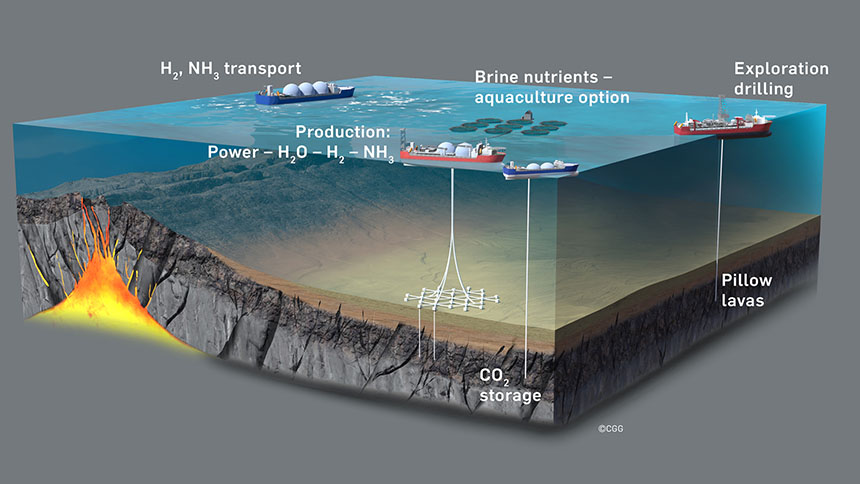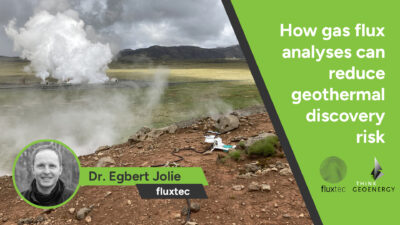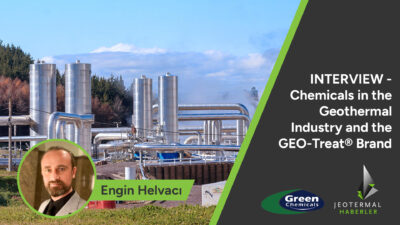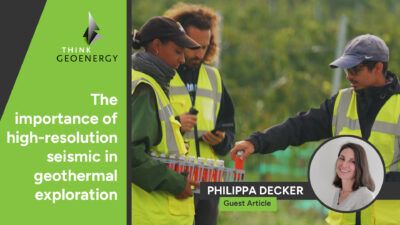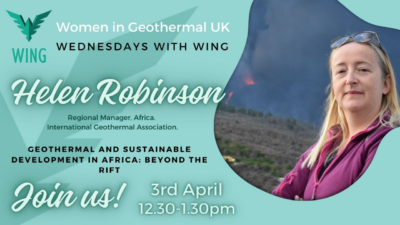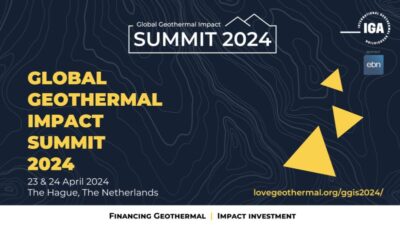CGG paper explores the potential of offshore geothermal
Geoscience technology company CGG has published a white paper on the potential for offshore geothermal energy and a possible framework for its development.
Global geoscience technology company CGG has released a new white paper outlining the potential of off shore geothermal energy as a green energy resource and proposing a framework for its responsible development.
The full white paper can be accessed via this link.
“We strongly believe that geothermal energy as a baseload resource has a greater role to play in the future energy mix. The opportunity offshore geothermal resources present could be a game-changer in supporting the United Nations Development Programme’s 2023 Sustainable Development Goals including clean energy, climate action, and partnerships for sustainable development,” said Peter Whiting, EVP of Geoscience, CGG.
“While the patent application recognizes the exceptional work of our Geothermal experts, our motivation for seeking it is to ensure that there can be rapid, responsible, and equitable development of these resources. We are delighted to publish this white paper and I’m proud that CGG will play an active role in supporting the development of this important global resource.”
With more than 25 years’ experience using its multi-disciplinary geoscience expertise and technology to undertake projects across the geothermal value chain, CGG is well placed to responsibly identify and assess the most prospective and suitable offshore geothermal locations and work with partner organizations to develop these resources. More specifically, its global geothermal data curation expertise, industry-leading subsurface imaging technology, and geological interpretation capabilities leveraging machine learning will play a key role in optimizing offshore geothermal well placement and production.
CGG had previously published tools for Geothermal Resource Assessment and Lithium Brine Screening.
The potential for offshore geothermal
The study states that there are potentially substantial geothermal resources along the magmatically active, 65,000-sq. km.-long, ocean floor spreading centers which occur in all of the world’s major oceans. There is also major geothermal potential along the flooded rift systems that represent the landward continuation of the oceanic spreading centers, and additional geothermal potential in some seas formed where the Earth’s crust is stretching.
The geothermal potential of oceanic spreading centers is already demonstrated in southern Iceland, where eposits from adjacent volcanoes have built up on top of submarine basalts of the North Atlantic Oceanic Ridge. This has allowed the underlying submarine geothermal system to be developed onshore.
Many of these offshore geothermal resources lie in international waters and will be regulated by the UN Convention of the Law of the Sea (UNCLOS) and its regulatory body, the International Seabed Authority (ISA). This means that exploration, research, development and manufacturing opportunities can be shared across the globe, for the benefit of humankind. Countries with ridge segments under national jurisdiction will benefit from knowledge-sharing and technological developments.
Creating a “Blue Economy”
The offshore geothermal system can ensure access to an affordable, reliable, sustainable baseload energy that can be utilised for a number of processes that generate additional commodities and revenue streams outside the realms of just heat and power. These provide several opportunities to further develop this resource.
The following routes to commercialization illustrate the diversity of potential developments that may apply in different techno-commercial and research settings:
- Fresh water production for agriculture or drinking by condensing steam from the turbines;
- Production of green hydrogen by electrolysis of condensates, or the conversion to green ammonia using geothermal power;
- Extraction of a wide spectrum of elements and minerals;
- Development of onshore infrastructure to support offshore geothermal operations and commercialization, thus providing economic development, training, and capacity-building particularly in low- to middle-income countries.
Moving forward with offshore geothermal
CGG has a published patent application for a novel combination of geological, geophysical and engineering technologies to help explore and develop offshore geothermal resources (CGG, 2022). The motivation for obtaining the patent is to ensure that there will be no patent “blockers” delaying rapid development of these resources.
CGG patent licenses will be available at a reasonable cost to companies from developed countries and at an easily affordable cost to underdeveloped countries in their own exclusive economic zones or when participating in projects in areas administered by the ISA.
The diversity of potential offshore geothermal resources and economic applications offers a real and urgent incentive for developed and developing nations to collaborate. That collaboration should aim to ensure a fair distribution of benefits, and to protect waters internationally through multi-facetted capacity building and sharing of a diverse suite of marine technologies.
Since many of these geothermal resources lie in international waters administered by the ISA, the scientific research, exploration, environmental baseline surveys, future production and economic activity in the ISA areas could be developed in ways that maximize the benefits to developing nations, whilst at the same time supplying large-scale multi-component green resources of benefit to humankind.
Source: CGG
